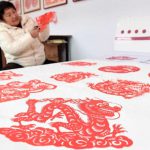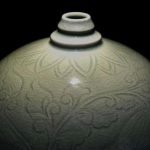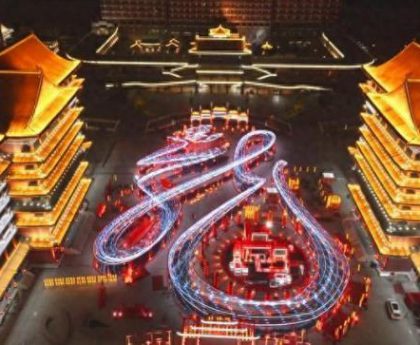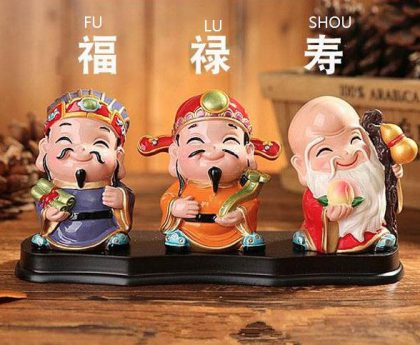It is an undeniable fact that Chinese porcelain is renowned worldwide, and in terms of the variety of porcelain itself, it is also extremely diverse. Celadon, white porcelain, shadow blue, monochromatic porcelain, and so on all carry the powerful technology and artistic achievements of ancient China. Among them, there is a type of porcelain that is very unique, even when people think of porcelain, it comes to mind. It is often used as an element to represent Chinese culture internationally, and that is blue and white porcelain.

The Definition of Blue and White Porcelain
Blue and white porcelain, also known as blue and white porcelain, is a high-temperature underglaze colored porcelain with white ground and blue flowers that originated in China and is widely used around the world. It is commonly referred to as blue and white and is also used to refer to this decorative technique. This variety is fresh, lively, simple and elegant. It is not only the most influential porcelain before industrialization, but also regarded as a representative of the aesthetic concept of the Chinese nation.
generalized
Broadly speaking, blue and white porcelain includes all white background blue and white pottery, stone body porcelain, and porcelain. Originating from China’s blue and white porcelain, it has influenced other regions, such as Delft Blue Pottery.
narrow sense
The narrow definition of blue and white porcelain is based on the products of Jingdezhen kilns from the Ming and Qing dynasties, and must meet the following characteristics:
The fetal body must be completely porcelain, presenting a pure white semi transparent shape, that is, blue and white must first be porcelain;
The blue pattern should be colored with cobalt containing pigments;
Transparent glaze on the outer cover, that is, blue and white must be underglaze color;
Finally, it is fired in a high-temperature reducing atmosphere.
In a narrow sense, the main production areas of blue and white porcelain are China, North Korea, and Japan, where the materials used are almost the same, with only differences in trace metal elements, resulting in different hair colors.
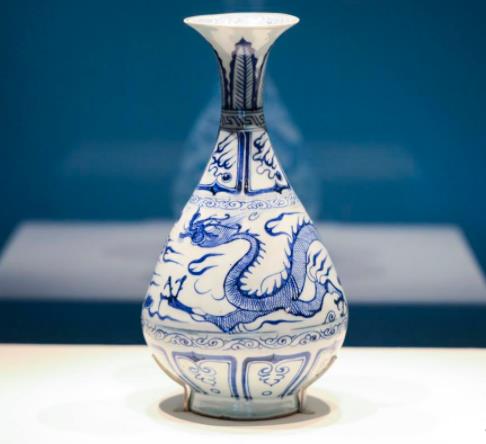
Imported cobalt materials and domestically produced cobalt materials
Due to the different types of minerals, there is a significant chemical difference between imported and domestic green materials. There are two types of imported green materials, Su Ma Li Qing and Hui Qing, all of which belong to the low manganese type. Su Ma Li Qing also contains trace amounts of copper or arsenic; However, all domestic materials belong to the high manganese type and do not contain copper or arsenic.
Su Ma Li Qing, also known as Su Ni Ma Qing, Su Bo Ni Qing, Su Ni Bo Qing, etc. The origin of its name is said to come from the transliteration of the Persian word “Suleiman”. The origin of this cobalt material is in the village of Kwamsa in Kashan, Persia. The villagers believe that a person named Suleiman discovered this cobalt material, so they named it after him. Another theory is that Su Ni Ma Qing should be Su Ma Li Qing, which is the transliteration of English smalt, meaning deep blue or a dark blue powder pigment used in painting. This material belongs to low manganese and high iron cobalt materials, so the blue and white color is thick and verdant, with “rust marks”, commonly known as “tin light”. Part of the Yuan blue and white porcelain, as well as the blue materials used in the Ming Yongle and Xuande official kilns, are all of this type, originating from ancient Persia or present-day Syria.
Huiqing is said to be produced in various regions such as the Western Regions, Xinjiang, and Yunnan. This material has a delicate and purple color, and if used alone, it will become loose and will not absorb. Therefore, it is often mixed with stone blue. This material was commonly used during the Ming Dynasty from Jiajing to the early Wanli period. Among them, it is divided into blue: mixed with 10% stone blue, used for mixing water (coloring), and has a bright green color; Medium blue: mixed with 40% stone blue, used for coloring (outlining), with clear and distinct strokes.
Zhejiang cuisine, also known as Zhejiang Qing, is produced in the Shaoxing and Jinhua areas of Zhejiang. Among domestic materials, Zhejiang material is the most superior, with a green hair color. From the mid Wanli period of the Ming Dynasty to the Qing Dynasty, this material was used for the blue and white ware of Jingdezhen official kilns.
Pingpingqing, also known as Pitangqing, is produced in Leping, Jiangxi. It was used in the late Ming Dynasty’s blank period and in the early Chenghua, Hongzhi, and Zhengde periods. This material has a light and elegant color, a bright green color, and stability, especially making Chenghua blue and white ware famous for a time.
Shiziqing, also known as Shiqing, is produced in the areas of Gao’an, Yifeng, and Shanggao in Jiangxi. When used alone, the blue and white color of this material is gray and even black. This material was commonly used in folk kilns during the Ming and Qing dynasties, while it was used in official kilns to blend with Huiqing.
Zhuming material is produced in counties such as Xuanwei, Huize, and Yiliang in Yunnan, with Xuanwei material being the best. This material has a bright and pure hair color. Kangxi blue and white porcelain often used this material.
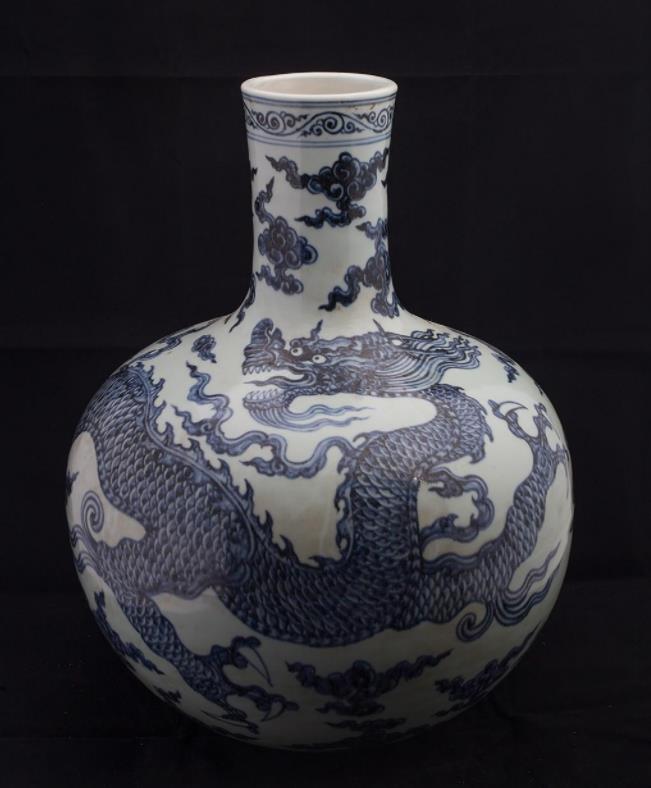
Production process
Material preparation
The raw materials used for blue and white porcelain can be divided into three types: raw material for body, raw material for glaze, and cobalt material (color material), each requiring different process formulations.
Raw materials for raw materials
The traditional body of Jingdezhen can be fired into soft porcelain using only porcelain stones; A mixture of porcelain stone and kaolin can also be used to ultimately obtain hard porcelain. Porcelain stones need to be crushed with a water hammer. Kaolin does not need to be crushed, but it still needs to be refined and refined. From the Ming Dynasty to the Qing Dynasty, the washing process continued to improve, resulting in increasingly delicate fetal bodies.
Glaze raw materials
Traditional glaze materials in Jingdezhen require the addition of glaze ash.
Cobalt material
The ancient handmade cobalt materials needed to adjust their formula and process according to their place of origin, and many of them had already disappeared with the depletion of mineral resources. Jingdezhen has been in use for a long time, and the materials used to this day are “Zhuming Materials” and “Zhejiang Materials”. The composition of Zhuming material varies greatly at different times and places of origin. Usually, the cobalt oxide content of the selected natural ore is around 5%, and the color is lighter after drawing. It is not suitable for direct use and needs to be further processed. Wash with water several times first, then calcine in the kiln. Select and grade the calcined cobalt material again, crush it again, and grind it in a ceramic mortar. After the first few rounds of grinding, rinse to remove impurities and soluble salts. Grind step by step, the finer the better. After the cobalt material is completely made, it should be stored in a container with water. The specific production method is to paint the plain porcelain body with blue pigment, apply colorless or light colored glaze on the surface, and then fire it in the kiln. The base color of the finished product is pure white or pink white, and the pattern colors are cyan black and dark blue; The later use of cobalt oxide (Co3O4) pigments results in a bright blue color. Some blue and white porcelain is decorated with pink or gold in addition to white and blue.
Taolian tire soil
Porcelain is made by firing porcelain clay, also known as kaolin. Natural porcelain clay contains a lot of impurities and needs to be washed out to remove most of them. Only then will the porcelain fired in the future be firm, delicate, and white.
Embryo making
The process of drying various shapes of washed porcelain clay.
painting
After drying, draw the pattern on the surface with blue and white material first.
Glazed cover
Cover the surface of the already decorated porcelain embryo with a layer of glaze water, usually using methods such as sticking glaze, brushing glaze, soaking glaze, and blowing glaze.
Firing
After the glazed porcelain embryo is fired at high temperature, the underglaze blue and white material presents a beautiful blue color. If the blue and white materials are not glazed on the outside, the patterns indicated on the porcelain will appear brown instead of blue after firing.

